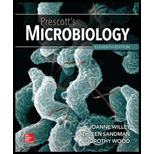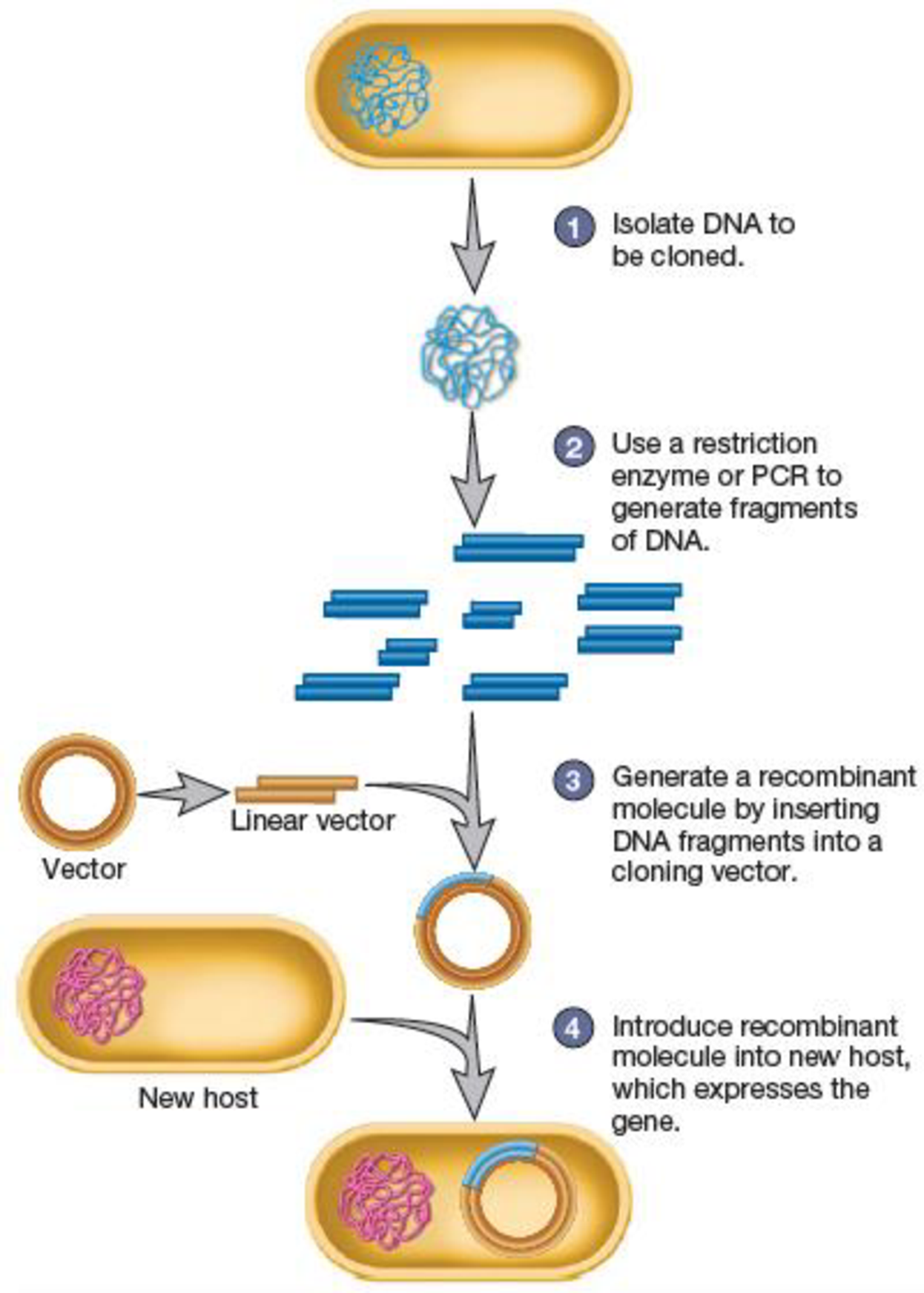
Concept explainers
Which of the DNA molecules shown are recombinant?

A recombinant DNA is a type of DNA having new nucleotide sequences. Such type of DNA is formed by linking the fragments obtained from two or more different sources. The first breakthrough of the recombinant DNA technology was the bacterial enzymes that cut the double-stranded DNA. These bacterial enzymes are referred to as restriction enzymes.
Explanation of Solution
The provided figure shows four steps that are involved in the cloning of a gene. These steps include:
- 1. Isolation of DNA which is to be cloned.
- 2. Generation of DNA fragments by means of restriction enzymes or PCR.
- 3. Insertion of DNA fragments into the cloning vector in order to generate a recombinant DNA molecule.
- 4. Introduction of recombinant DNA into the new host cell which expresses the gene.
The DNA molecule shown in step 3 in the given figure is the recombinant DNA molecule. This step shows the vector along with an insert referred to as a recombinant DNA molecule. The bacterium produced, shown in step 4, is the recombinant organism.
Want to see more full solutions like this?
Chapter 17 Solutions
Prescott's Microbiology
- Why can't there be more than two complementary primers?arrow_forwardThe region of the normal hemoglobin gene used for genetic testing for sickle cell anemia contains a restriction site such that homozygous normal individuals show two DNA fragments. If a single nucleotide change in hemoglobin destroys that restriction site, then how many DNA fragments will be visible on a gel from individuals that are homozygous mutant? What about heterozygotes?arrow_forwardAnswer the following questions: A) Why the extension cannot be 3´---5´ and why it has to be 5´------3´? B) What is a gene?arrow_forward
 Human Anatomy & Physiology (11th Edition)BiologyISBN:9780134580999Author:Elaine N. Marieb, Katja N. HoehnPublisher:PEARSON
Human Anatomy & Physiology (11th Edition)BiologyISBN:9780134580999Author:Elaine N. Marieb, Katja N. HoehnPublisher:PEARSON Biology 2eBiologyISBN:9781947172517Author:Matthew Douglas, Jung Choi, Mary Ann ClarkPublisher:OpenStax
Biology 2eBiologyISBN:9781947172517Author:Matthew Douglas, Jung Choi, Mary Ann ClarkPublisher:OpenStax Anatomy & PhysiologyBiologyISBN:9781259398629Author:McKinley, Michael P., O'loughlin, Valerie Dean, Bidle, Theresa StouterPublisher:Mcgraw Hill Education,
Anatomy & PhysiologyBiologyISBN:9781259398629Author:McKinley, Michael P., O'loughlin, Valerie Dean, Bidle, Theresa StouterPublisher:Mcgraw Hill Education, Molecular Biology of the Cell (Sixth Edition)BiologyISBN:9780815344322Author:Bruce Alberts, Alexander D. Johnson, Julian Lewis, David Morgan, Martin Raff, Keith Roberts, Peter WalterPublisher:W. W. Norton & Company
Molecular Biology of the Cell (Sixth Edition)BiologyISBN:9780815344322Author:Bruce Alberts, Alexander D. Johnson, Julian Lewis, David Morgan, Martin Raff, Keith Roberts, Peter WalterPublisher:W. W. Norton & Company Laboratory Manual For Human Anatomy & PhysiologyBiologyISBN:9781260159363Author:Martin, Terry R., Prentice-craver, CynthiaPublisher:McGraw-Hill Publishing Co.
Laboratory Manual For Human Anatomy & PhysiologyBiologyISBN:9781260159363Author:Martin, Terry R., Prentice-craver, CynthiaPublisher:McGraw-Hill Publishing Co. Inquiry Into Life (16th Edition)BiologyISBN:9781260231700Author:Sylvia S. Mader, Michael WindelspechtPublisher:McGraw Hill Education
Inquiry Into Life (16th Edition)BiologyISBN:9781260231700Author:Sylvia S. Mader, Michael WindelspechtPublisher:McGraw Hill Education





